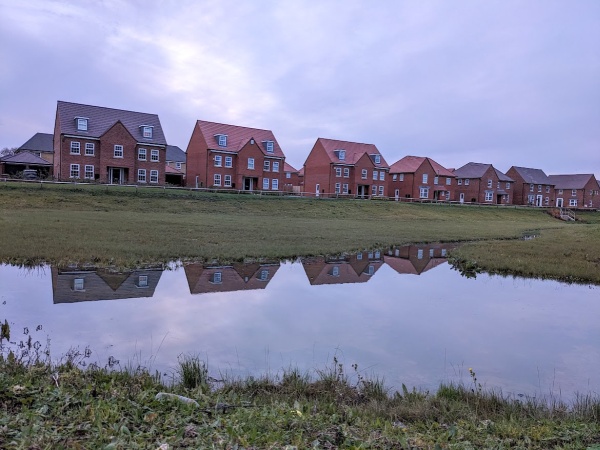
One feature of the Kings Gate and Abbey Fields developments is the presence of artificial lakes that alternate between flooding and dryness. One such lake is adjacent to Blyth Park, a residential street that has a waterfront some of the time. The street’s name pays homage to Wing Commander James Blyth, who served as Mayor of Abingdon from 1984-5 and previously was at RAF Abingdon.
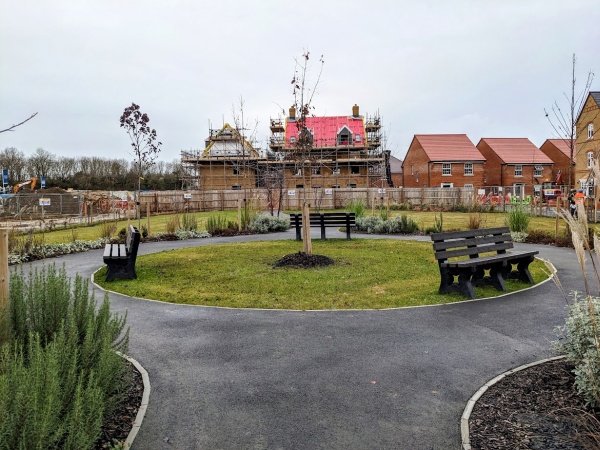
Hobby Green had an open view to the north on a previous visit, but now the houses surround it on all sides.
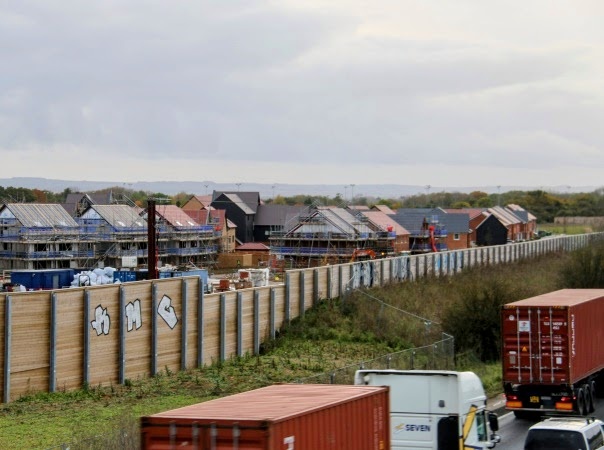
The Abbey Fields development is shielded from the A34 by a fence, intended to mitigate the noise from the busy highway. When the A34 was constructed, traffic levels were significantly lower, and a buffer of fields separated it from the houses in Abingdon. It won’t be long before people are demanding a 50 MPH limit as happens where the A34 is as close to the houses in North Oxford.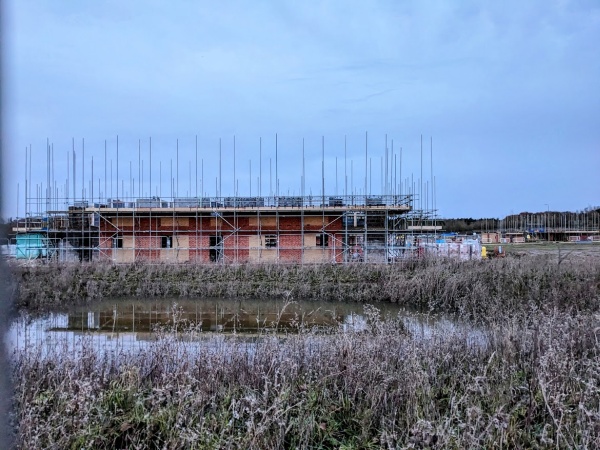
The Abbey Fields development has a footpath that goes through the middle. Until recently only the western side of the footpath has been built upon, but now the eastern side has started to be built upon.
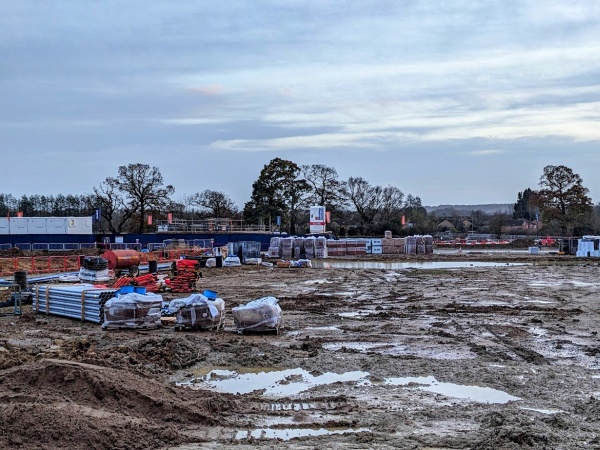
Further east, the new development on Twelve Acre Drive was in the news recently, because of silting up of a stream that goes through Abingdon. They Environment Agency are investigating the cause. See https://www.oxfordmail.co.uk/news/23965706.environment-agency-investigating-abingdon-waterway-pollution/.
Transformation is certainly one word for it.
I notice the graffiti artists have utilised the flat surfaces of the sound fence next to the A34. Makes the place look very attractive.
I think the A34 might and already does self regulate regarding speed as almost daily there’s a section reduced to crawling speed, still soon there will be another escape/entry route at North Abingdon for jam avoidance.
And so we cannot get an appointment with the G P’s now. The effect of adding thousands of extra population to Abingdon has consequences.
when i said i wanted a water feature in my garden that’s not what i meant.
Now cue all the usual characters…..”consultants…..GPs……why here…..traffic…….slip road…….good old days……resevoir”
Don’t forget 20mph limits. Oh, and active travel, LTN, nimby…
If we can denigrate those uncomfortable issues, hopefully we can move on from them as they clearly aren’t important or need answering.
That way we can just get on with all these wonderful things, without anyone being accountable.
I don’t understand your comment Daniel (sometimes I lose the point amongst the humour but maybe just me). I think the accountability for most of the issues is fairly clear. Personally I don’t have any great problems with 20mph or active travel, but I guess if you’re against it you just vote for someone new at the next elections.
Admittedly out overly stratified local government system does make it unclear exactly who is responsible for what so maybe that’s what you’re getting at?
I think my point (don’t fret, I lose myself sometimes too) was that it felt we were being “had a go at” for complaining about consultants, GPs, traffic etc.
These are all entirely true and just things to question, to shout at from the side lines, to be unhappy with, to query and to worry about. Making out that even mentioning them is “here we go again” I think undermines the true, and entirely valid concerns that people have. And this wonderful blog is here for all of us, not just to celebrate what’s great (which it does exceptionally well); but to also offer a voice to those who have opinions and concerns to the contrary.
Re 20mph limits…. It is a true fact that arm bands (while swimming, but ignore that for now) saves lives. This is true. Therefore all road users should wear armbands. As, obviously, who wouldn’t want to save lives, right?
This is the exact same proposition that 20mph limits offer.
It makes no sense and as such is nothing more than a “cheap” vote winner. I find that a bad thing.
I wouldn’t mind if 20mph limits had zero negatives. But as there ARE negatives, but arguably zero positives, then I can’t help but question not only their legitimacy but also the motives of those implementing them.
But thats just me.
If nothing else, I am heartened by the fact that you at least recognise there is often humour, whether missed or not, so thank you.
As someone who lives in a village with a new 20mph limit I’m very grateful for it: less noise, less vibration, easier to cross the road etc. And as a driver on these very congested roads in Abingdon I understand why its there and have no trouble abiding by it.
Couldn’t agree more – 20mph limits in appropriate places are of course a good thing. Blanket 20mph limits where they do no good – but are a cheap vote winner – are not.
Incidentally, 20mph limits have not been “sold” to us as a noise reducing, vibration reducing, easier road crossing initiative. They have been “sold” to us as safer streets and also good for the environment. They do not do this.
I am a driver on the very congested roads as well. I do not understand why the limits are there. (well, I mean, I do – see the bit about votes above).
At the Radley Reach development I noticed that once the top soil had been removed the underlying layer seemed to be very sandy/gravelly – does the thames gravel extend to there?
An old geological map shows limestone, silt and sand beneath fields next to Twelve Acre Drive. This differs from those next to Dunmore Rd, which show Kimmeridge Clay.
“The Kimmeridge Clay Formation, of Late Jurassic Kimmeridgian age, is seen at outcrop beneath the Vale of the White Horse in the Abingdon district. It comprises rhythmic sequences of pale calcareous mudstones, dark, shelly, carbonaceous mudstones, and silty mudstones, commonly with beds of cementstone (impure limestone) nodules. It includes some sandy and silty units in its upper parts.
Not a geologist though, just a Googler!
Just a note that the stream running next to the kid’s play park between Appleford Drive and Peachcroft was really high at 8:30 this morning, struggling to get under the concrete bridge, and the water was brown. I’ve not seen water that high in my life and wonder if it’s connected to the silting up of the stream running down from Twelve Acre Drive?